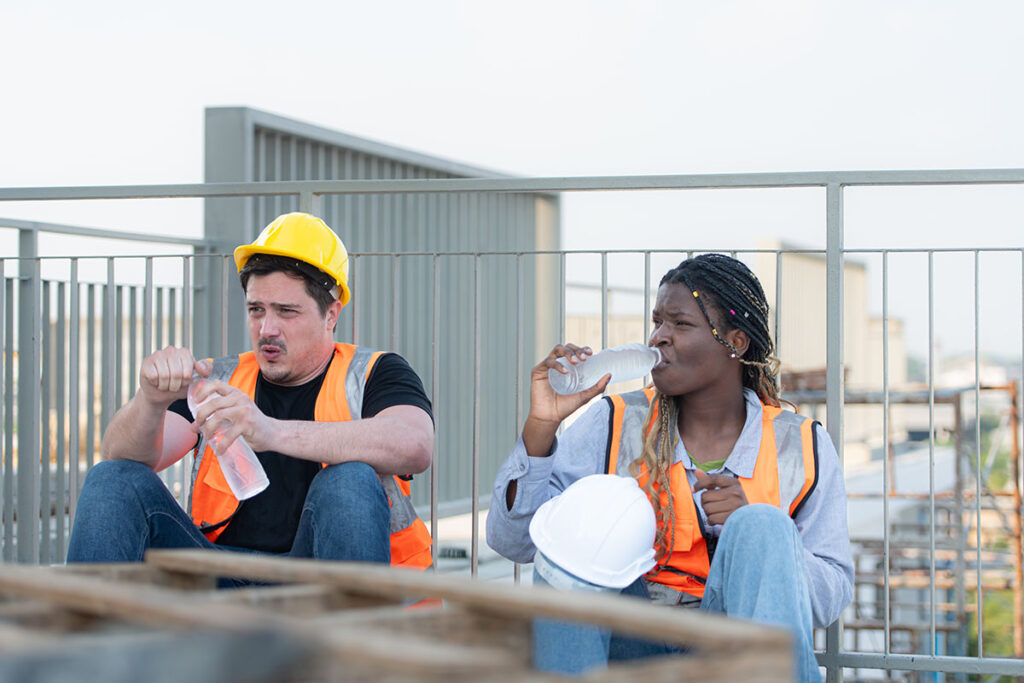Students begin by figuring out that heat waves and periods of extreme heat are occurring more frequently in California. They investigate what extreme heat is, leaving them wondering how extreme heat affects people, communities, and the environment. Through further exploration, they learn that certain groups, like older adults and people without air conditioning, are more vulnerable to extreme heat. Students also explore ways to stay cool, like fans, protective clothing, and hydration.
Students then investigate actions individuals and communities can take to prepare for and stay safe from extreme heat. Students explore solutions communities are already enacting. This includes setting up cooling centers, issuing heat warnings, and providing shade and water for outdoor workers. The unit culminates with students developing an action plan to help their community prepare for extreme heat and help create a cooler environment.

“WOW! What incredible and engaging lessons to do with my students. They loved this opportunity to be scientists, explore and think about the food they eat, and I loved the ways that they began to model. I am so excited about these lessons and cannot wait to share them with my coworkers.”
“My students often refer to the experience and knowledge gained. I plan to use Seeds to Solutions lessons in the future.”
“This did a great job of piquing students’ interest and sparking opposing points of view, which created lively discussions on the topic.”
“I truly enjoyed teaching this. It has been heartwarming to see them care about other living things and the environment.”
“What I find interesting is that students are discussing the material outside of class time. I heard students discussing the ideas before class in the hallways and even during lunch periods.”
“This is engaging because it uses real data about the state students live in and shows changes within their lifetime, like the rise of warehouses and trucking during the pandemic.”
“I heard comments like, ‘I didn’t realize how much climate change affects my community,’ and, ‘This project made me think about what I can do to help.'”
“I have learned ways to improve my teaching, and I have been at this for 38 years. The students are gaining a deeper understanding of what climate change is: what causes climate change, and the impact of climate change on crop yield.”
“Using the maps and seeing things like schools and how close they are to hazards is really cool. They may not be super connected personally, but they can put themselves in the shoes of other kids and try to relate. I know it’s working because I have a kid that just watches Netflix all day, every day and he pulled out his earbud and participated!”
“The kids become more engaged because now they are actually actively doing things. They’re really having to look for themselves. It’s not given to them on a platter, but all the resources are right there.”
“I am so amazed and impressed by the depth of resources that you embedded in the teacher guide. This is really well put together.”
“When you’re out in the workforce, you’re trying to solve problems that don’t have a clear, immediate answer. So doing stuff like this helps give students practice.”

Douglas Watkins, 3D Science Instruction
Meagan Nelson-Palamara, Curriculum Developer
Angelle Lailhengue, Curriculum Developer
Anita Palmer, GIS Etc
Roger Palmer, GIS Etc
Roni Jones, Ten Strands
Matt Ellinger, Designer
Stacey Lane, Illustrator
Kim Parfitt, Science Educator
Community Resources for Science
Oakland Teachers Advancing Climate Action
Vivienne Adams, Vaughn Next Century Learning
Janet Balenoff, West Contra Costa USD
Chanel Dawson, Los Angeles USD
Cory Day, Laguna Beach USD
Alaka Devi, Fremont USD
Cherene Fillingim-Selk, Berkeley USD
Fenna Gatty, Livermore USD
Maria Gomez, Los Angeles USD
Natalie Gutierrez, Lincoln USD
Misa Horita, Lincoln USD
Cait Jenkins, Berkeley USD
Kristyn Jones, West Contra Costa USD
Lyndon Pepito, Los Angeles USD
Kameryn Sanchez, Oakland USD
Amy Tenaza, Lincoln USD
Karen Yu, Vaughn Next Century Learning
You’ll get news on Seeds to Solutions and environmental literacy from Ten Strands
"*" indicates required fields
© 2025 San Mateo County Office of Education and Ten Strands | Terms of Use | Privacy Policy